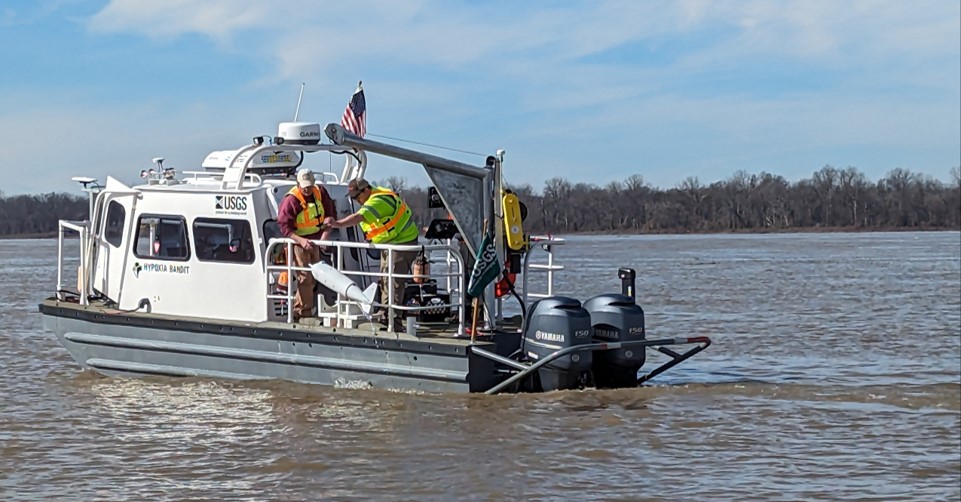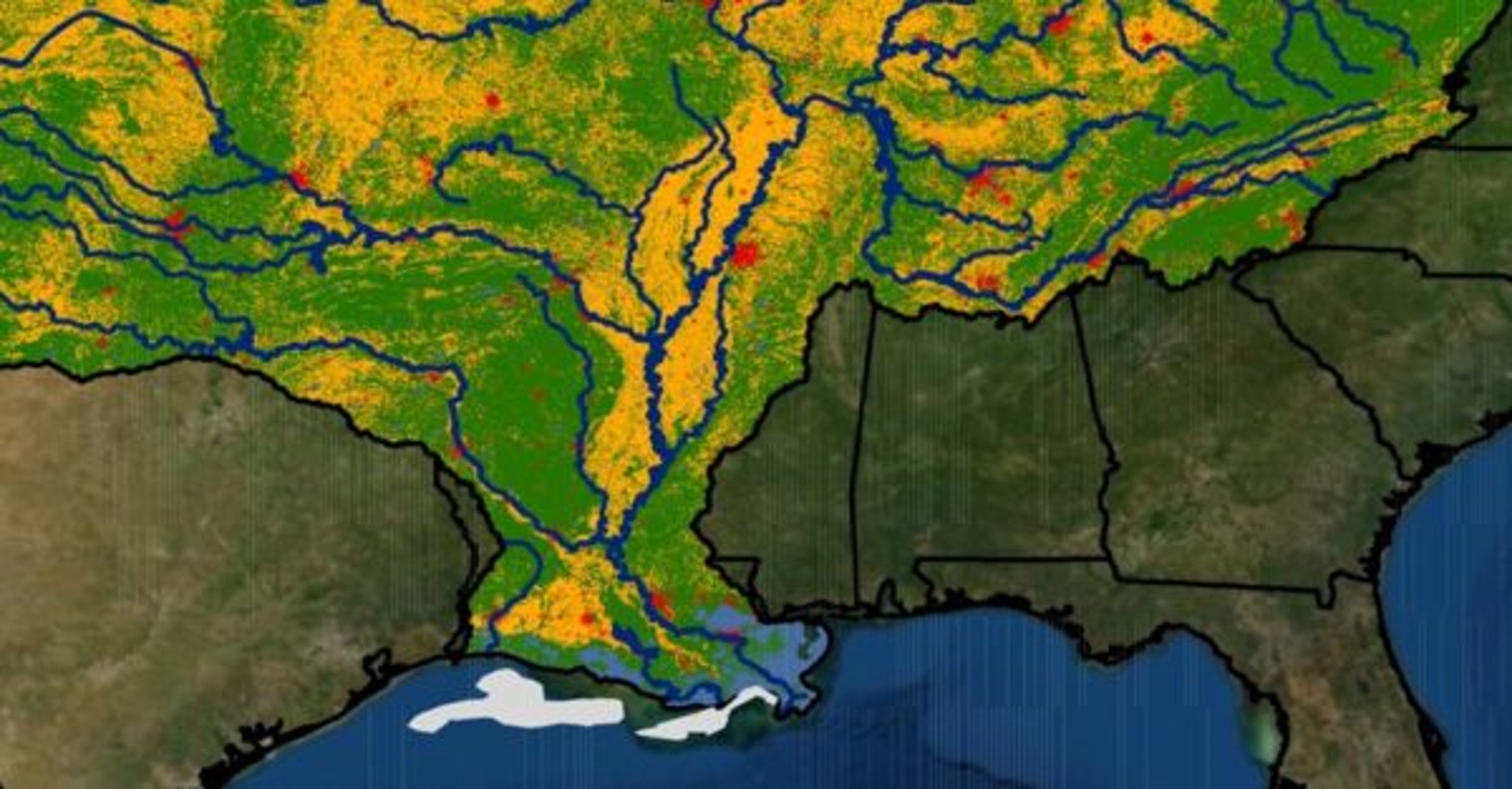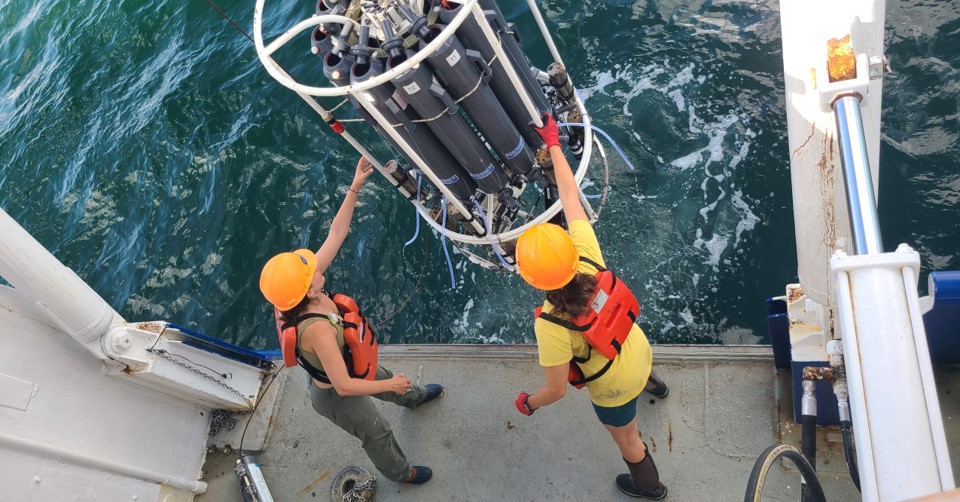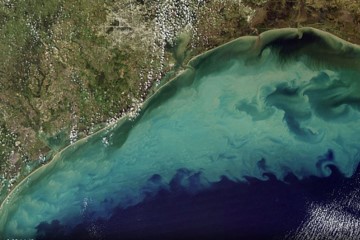Hypoxia
Hypoxia occurs when the amount of oxygen in water becomes too low to support most aquatic life (typically below 2
mg/L). Hypoxia is an expanding global problem and a symptom of degraded water quality, largely resulting from human
activities such as agricultural runoff, burning of fossil fuels, and wastewater treatment discharges. Hypoxic waters can
become dead zones for organisms that cannot escape. This directly impacts ecosystem health, and often reduces
the value of commercial and recreational fisheries. The majority of NOAA’s efforts to understand and reduce hypoxia in U.S. coastal waters are supported through the NCCOS Competitive Research Program.
Hypoxia Forecasting
NCCOS and the Mississippi River/Gulf of Mexico Watershed Nutrient Task Force
NCCOS supports NOAA’s role in the Task Force, which is charged with collaboratively reducing and controlling the Gulf of Mexico dead zone, the largest hypoxia area in the U.S. We support the Task Force by:
The overall goal of the Coastal Hypoxia Research Program is to improve the ability of resource managers to effectively prevent or reduce the ecological and economic impacts of hypoxia on marine and Great Lakes ecosystems. Prevention or reduction of hypoxia requires a fundamental understanding of the causes and consequences of hypoxia and tools to evaluate the effectiveness of management strategies. This program provides research results and modeling tools for resource managers to assess alternative management strategies to address hypoxia in ecosystems and make proactive and informed decisions. Research topics include: determining the causes of hypoxia; developing the capability to predict its occurrence in response to varying levels of anthropogenic stresses; and evaluating the subsequent ecological, economic, and social impacts of hypoxia.
Gulf of Mexico Hypoxia Impact Studies
The northern Gulf of Mexico contains almost half of the nation’s coastal wetlands and supports commercial fisheries generating one billion
dollars annually. Hypoxic waters prevalent during the summer can cause habitat loss, stress, and even death to marine organisms, affecting
commercial harvests and the health of impacted ecosystems. Current studies are documenting the dynamics of the hypoxic zone over the
Louisiana continental shelf, including its extent, the processes that influence its development, and its impact on fisheries.
Our Partnerships
Other program offices are also conducting activities to reduce nutrient inputs to the Gulf of Mexico and monitor thedead zone and its impacts to fishery resources.

NOAA Runoff Risk
This program offers real-time decision support tools that provide farmers and producers actionable guidance about when to avoid nutrient applications due to unfavorable environmental conditions. These tools are based on the weather and hydrologic modeling capabilities of the National Weather Service.

Gulf of Mexico Hypoxia Watch
This program maps dissolved oxygen data to monitor hypoxic conditions in the Gulf of Mexico. Data are collected during the annual NOAA Fisheries Summer Groundfish Survey, which evaluates population and health of commercially important shrimp, fish, and other organisms relative to environmental conditions as part of the Southeast Area Monitoring and Assessment Program.
Take a Closer Look: Environmental Interactions
We are assisting coastal managers and aquaculture farm operators with the development of environmental monitoring protocols for marine
aquaculture, which will support sustainable development of the aquaculture industry. Monitoring is a powerful tool for ensuring aquaculture
activities are conducted with minimal long-term impacts to marine ecosystems. The best monitoring protocols provide a standardized guide for the collection of data to reflect environmental trends around a farm, without placing undue burden on farm operators.









